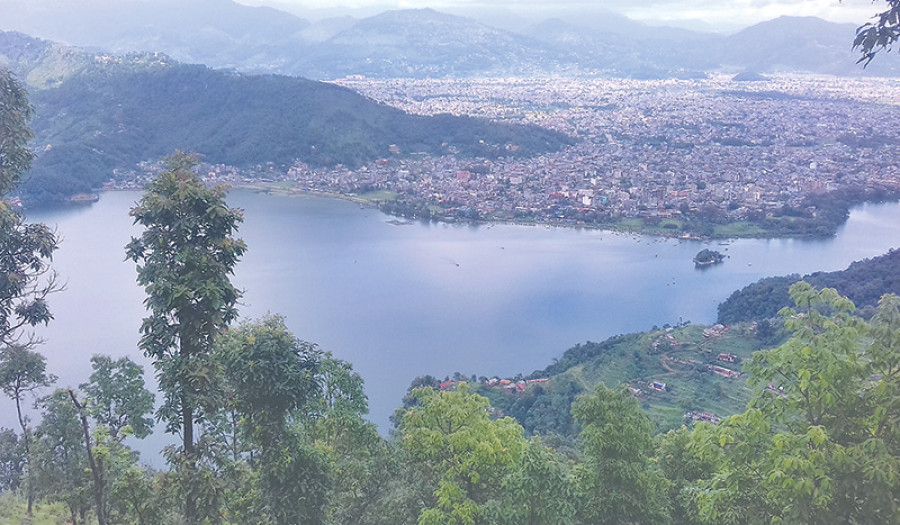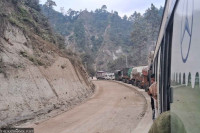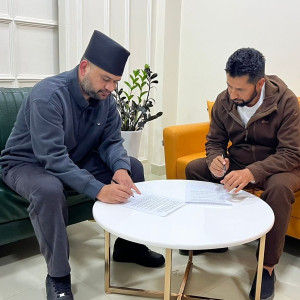Editorial
Invest in the environment
We must build our opportunities but not at the cost of the environment and people.
A 2017 study on land use and land cover change in the Phewa Lake watershed which analysed Landsat images captured in three consecutive periods—1975, 1995 and 2015—reveals that there has been a significant shift over the past four decades. According to the study, there has been a substantial reversal of land degradation and forest recovery due to community-based forest landscape restoration activities. Researchers also noted that while water discharge rates may have decreased following the increase in forest area, siltation has been reduced, protecting water quality in the lake and benefiting local economic development.
In 2019, another study analysed the lake’s evolution from 1926 to 2017 and modelled the 50-year trajectory of shrinkage by using a combination of historical maps and satellite imagery. Researchers concluded that Nepal’s second-largest lake was shrinking due to sediment influx, and estimated that it would lose 80 percent of its storage capacity in the next 110-347 years, which would affect recreational use, agricultural irrigation, the fishing industry and a 1-megawatt hydropower plant.
And earlier this year, a spatial analysis of the watershed using Landsat images of 2005 and 2018 found that anthropogenic activities, particularly unplanned road construction which causes landslides during the monsoon, haphazard urbanisation, and migration, are affecting the beauty of Phewa Lake. The study also highlights that the most significant land change was noticed from agriculture land to forest cover, and from agriculture to built-up area. Researchers conclude that agricultural and degraded land were converted into built-up areas because of population growth, and that barren regions near the lake have a higher potential for encroachment. More than 40 hectares of agricultural land, the study warns, could be converted into built-up area.
Multiple studies of Phewa Lake have time and again corroborated the need to conserve and manage the watershed, and shown direct linkages to economic prosperity, physical and mental well-being, and most of all, ecological benefits. But close to 14 years since the Phewa Lake controversy first caught national attention, and despite a Supreme Court order in April 2018 to demolish all establishments within 65 metres from the lake’s edge and acquire private land to conserve the lake, all efforts to preserve the watershed have been mired in bureaucratic hurdles and ridiculous excuses like lack of an authentic map or a compensation scheme for landowners.
Phewa Lake is but one instance, caught between a flawed narrative of development and destruction, and the politics-business nexus. There is no shortage of scientific rationale or expertise and solutions to deal with the most pressing ecological concerns of our times. Still, how we seek prosperity by exploiting natural resources, but not in unspoilt nature, could take us to the point of no return. Both the government and the public must realise that we must act while we still have the time, or the consequences of considering the environment as an enemy of development will be at our own peril.
Recurring natural disasters aggravated by anthropogenic activities continue to kill and displace thousands of people, and destroy property and infrastructure worth billions. And there is a growing call from the scientific community to preserve and restore our ecological systems, given how fragile our situation is as an essential environmental corridor across the Himalayan belt. We cannot continue to count the number of dead and injured or do the math of financial blows to the economy, and not do much to manage our natural resources in a manner that is both scientific and balanced. The leadership across the three tiers of government must not forget that we’ve already invested decades of conservation efforts, and we must build our opportunities, but not at the cost of the environment and people.
Let the restoration of the Phewa Lake watershed be the opening chapter in this course correction.




 17.49°C Kathmandu
17.49°C Kathmandu














